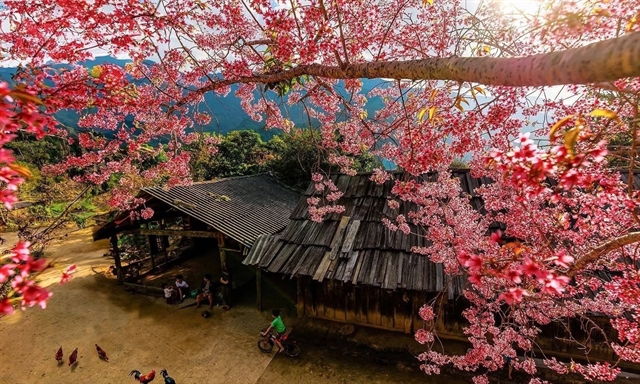 Travel
Travel

Đông Ngạc Village is home to around 100 well-preserved old houses, some of which date back to 1605, showcasing an architectural style that has withstood the test of time.

|
| Tourists explore ancient houses in Đông Ngạc. — VNS Photo Đoàn Tùng |
By Thanh Nga
Amidst the hustle and bustle of modern urban life in Hà Nội, Đông Ngạc Village stands as a peaceful and captivating destination, exuding its own unique nostalgic charm.
This ancient village, also known as Vẽ Village, boasts a history of over 400 years and is located in Bắc Từ Liêm District, some 10km from the city centre.
As we arrived at the village on a serene autumn morning, we were greeted by picturesque verdant gardens, towering skies, and the gentle interplay of autumn sunlight and mist. The atmosphere exuded tranquillity and time seemed to slow down.
Đông Ngạc Village is home to around 100 well-preserved old houses, some of which date back to 1605, showcasing an architecture that has withstood the test of time. These houses typically feature a 3 or 5-room layout, with low floors and four-sided tiled roofs. They were meticulously constructed, incorporating precious wooden columns made from ironwood, sến wood, and táu wood.
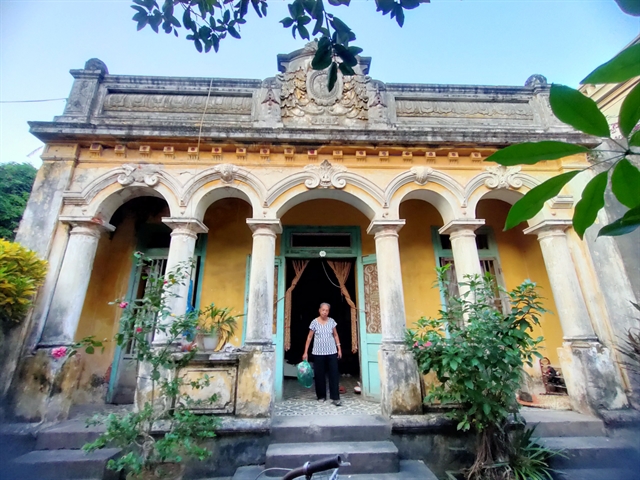
|
| Nostalgic beauty of a house with an architectural style that blends local and European features. — VNS Photo Đoàn Tùng |
This village has a rich history of nurturing talented individuals who rose to become high-ranking mandarins during the late Lê, Mạc and Nguyễn Dynasties, resulting in the elaborate design and craftsmanship of these houses.
Beyond the architectural influences from feudal eras, Đông Ngạc Village also bears the mark of ancient French style. A notable example is the primary school near the village communal house, painted in charming yellow hues. However, the European elements introduced here were adapted to suit local tastes. Intricate carvings depicting flying dragons, lotus flowers, and subtly curved traditional structures adorn the walls and roofs of this school.
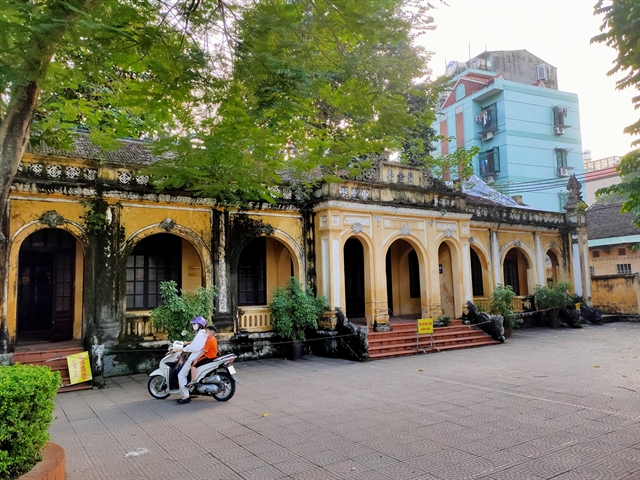
|
| Đông Ngạc B Primary School is a typical architectural work of mixed European and Asian style that is still quite original in Đông Ngạc Village. — VNS Photo Đoàn Tùng |
In its present state, the village truly lives up to its reputation as "an ancient village within the city." Modernity and antiquity intertwine harmoniously, with many newly built houses boasting grand and beautiful villa-style designs while preserving adjacent short old houses. Even within these new constructions, elements such as stone lions and ancient wells evoke a sense of nostalgia.
The village offers a wealth of exploration opportunities. Every banyan tree, every well, and every brick on its roads holds a story of its own.

|
| Gate of a house in Đông Ngạc Village. — VNS Photo Đoàn Tùng |
During our visit, we had the chance to explore Vẽ Communal House, which has stood for nearly 400 years. The Thị and Keo trees within its premises, aged almost 300 years, still bloom and bear fruit to this day.
Vẽ Communal House showcases the distinctive ancient architecture of Đông Ngạc Village and holds significant historical and cultural value in Việt Nam's northern region. Its majestic roof, adorned with centuries-old parapets, has never been replaced. Although the communal house underwent major restoration in 1999, it retains its original features to this day.
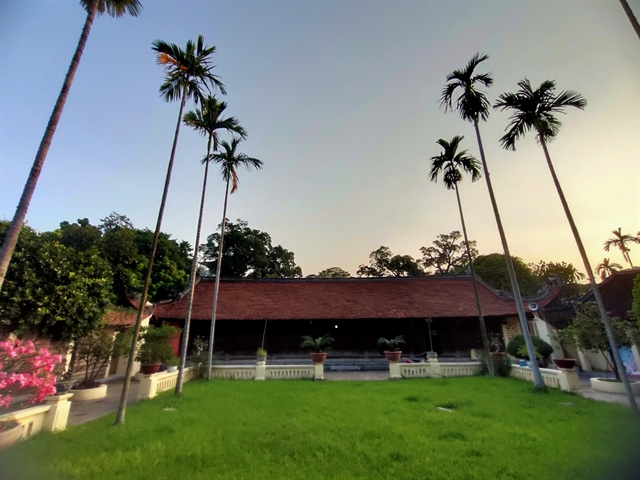
|
| Vẽ Communal House with its poetic green yard. — VNS Photo Đoàn Tùng |
In addition to the communal house, the village is home to Tư Khanh Pagoda, a stunning structure boasting 59 rooms, excluding the surrounding gardens. The pagoda currently houses 53 statues, three bells cast during the Nguyễn Dynasty, and numerous other ancient objects of worship.
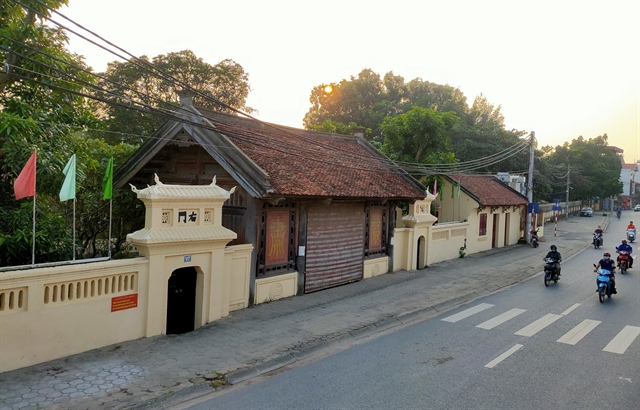
|
| Đông Ngạc is one of few villages in Hà Nội to have still kept its cultural features and historical architecture, despite the impacts of rapid urbanisation. — VNS Photo Đoàn Tùng |
As we strolled through the village, we discovered narrow alleys adorned with beautiful and ancient names, such as Ngạc Alley, Vẽ Alley, and Đông Alley. The tiled pathways beneath our feet represent the collective efforts of families whose eldest daughters were getting married. In the past, it was customary for young women to contribute 300 bricks to pave the road in preparation for their weddings. Consequently, the red brick paths continuously expanded, covering the paths of the village.
The village is also renowned for its emphasis on education.
"From the Trần Dynasty to the Nguyễn Dynasty, Đông Ngạc Village produced 22 Doctors of Philosophy and over 400 bachelors. According to the feudal court's regulations, any village with 10 or more PhD graduates would be recognised as an academic village. As a result, many refer to Đông Ngạc Village as the 'academic village' or the 'village of scholars,'" local resident Trần Quang Đại shared.
With such an impressive number of scholars, Đông Ngạc Village ranked third in the country during the feudal era in terms of PhD holders, surpassed only by Mộ Trạch Village in Hải Dương Province (36 PhDs) and Kim Đôi Village in Bắc Ninh Province (25 PhDs).
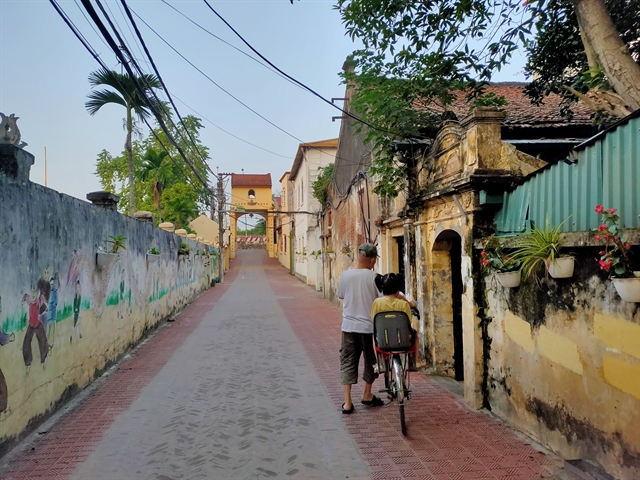
|
| A road in the village. — VNS Photo Đoàn Tùng |
Today, the village proudly preserves its ancient houses, moss-covered gates, ancestral temples and pagodas, offering a delightful experience for visitors in the capital city.
Nguyễn Thị Vân, a former teacher at Đông Ngạc A Primary School, shared insights into the villagers' commitment to preserving their traditional cultural heritage: "The preservation of relics such as communal houses, pagodas and ancestral temples in the village is a testament to the collective efforts of its residents. Even during the period of French occupation, the villagers fought to protect and safeguard these treasures. It all depends on the consciousness and dedication of the villagers." VNS
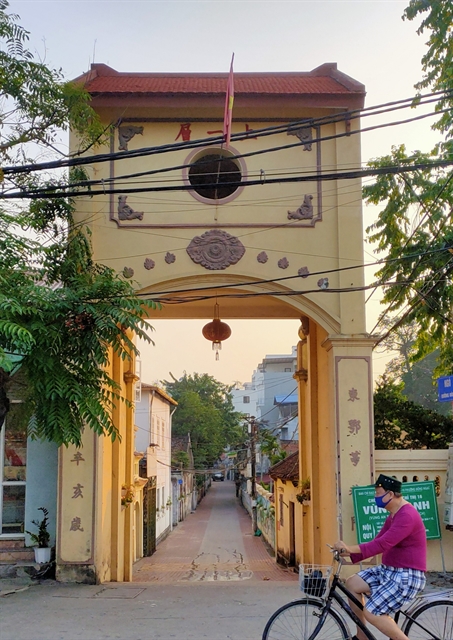
|
| Đông Ngạc ancient village gate. — VNS Photo Đoàn Tùng |